Ditapis dengan
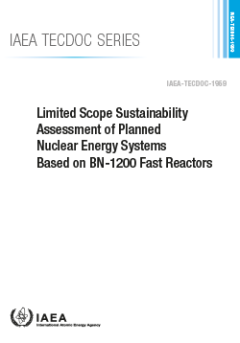
Limited Scope Sustainability Assessment of Planned Nuclear Energy Systems Bas…
An example of a limited scope INPRO sustainability assessment of an innovative nuclear energy system used the BN-1200 fast reactor as a case study. The INPRO assessment was performed at the full-depth criteria level and helped to identify actions for sustainable long term deployment of sodium cooled fast reactors. The publication describes the application of the INPRO sustainability assessment …
- Edisi
- -
- ISBN/ISSN
- 978-92-0-109121-5
- Deskripsi Fisik
- 100 Pages
- Judul Seri
- -
- No. Panggil
- -

Technical Reports Series No. 369: Management for Excellence in Nuclear Power …
The objective of this report is to facilitate a recognition of priority management issues which, when not adequately recognized and addressed, can result in problems in operational performance at nuclear power plants. It provides a number of effective practices, reflecting the positive experience of nuclear power companies, that have prevented or corrected problems related to selected managemen…
- Edisi
- -
- ISBN/ISSN
- 92-0-103194-7/0074-1914
- Deskripsi Fisik
- -
- Judul Seri
- -
- No. Panggil
- -
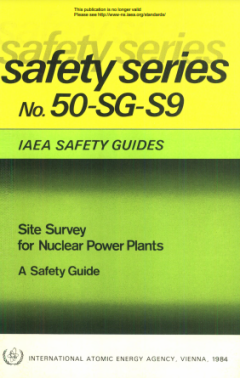
Safety Series No. 50–SG–S9: Site Survey for Nuclear Power Plants, A Safet…
This Guide describes the first stage of the siting process for nuclear power plants — the site survey, which involves the study and investigation of a large region to select one or more preferred candidate sites. Its purpose is to recommend procedures and provide information for use in implementing a part of the Code of Practice on Safety in Nuclear Power Plant Siting (IAEA Safety Series No. …
- Edisi
- -
- ISBN/ISSN
- 92-0-123884-3
- Deskripsi Fisik
- 48 p. : Illus. ; 24 cm
- Judul Seri
- Safety Guides
- No. Panggil
- 629.135 IAE s
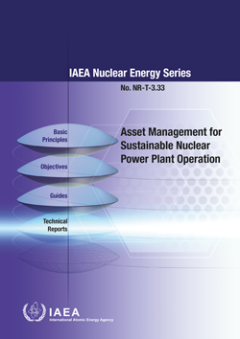
Asset Management for Sustainable Nuclear Power Plant Operation - IAEA Nuclear…
Asset management plays an important role in maintaining the competitiveness of nuclear power plants in a challenging and changing electricity market. The value of effective asset management is in providing support to those making decisions seeking the optimum level of financial performance, operational performance and risk exposure. This publication provides information on various methodologies…
- Edisi
- -
- ISBN/ISSN
- 978-92-0-126720-7
- Deskripsi Fisik
- 83 hal
- Judul Seri
- -
- No. Panggil
- -
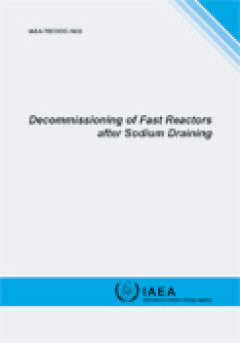
IAEA - TECDOC Series No. 1633 : Decommissioning of Fast Reactors after Sodium…
Decommissioning of fast reactors and other sodium bearing facilities is a domain in which considerable experience has been accumulated. This publication arises from an IAEA technical meeting convened to address decommissioning experience with fast reactors, in particular with regard to the decommissioning of components after sodium draining. Experience gained from the decommissioning of both ac…
- Edisi
- -
- ISBN/ISSN
- 978–92–0–111809–7 / 1011–4289
- Deskripsi Fisik
- 189 p
- Judul Seri
- -
- No. Panggil
- -
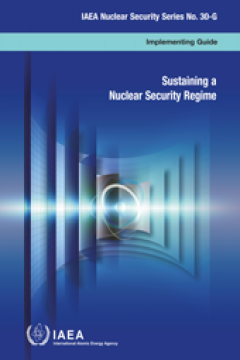
Sustaining a Nuclear Security Regime - Implementing Guide | IAEA Nuclear Secu…
This publication addresses the sustainability of all aspects of a national nuclear security regime, including those relating to nuclear material and nuclear facilities, other radioactive material and associated facilities, and nuclear and other radioactive material out of regulatory control. The publication is relevant for States that have established a nuclear security regime as well as for St…
- Edisi
- -
- ISBN/ISSN
- 978-92-0-111816-5
- Deskripsi Fisik
- 26 Halaman
- Judul Seri
- -
- No. Panggil
- -
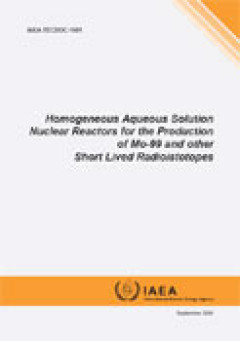
IAEA - TECDOC Series No. 1601 : Homogeneous Aqueous Solution Nuclear Reactors…
This publication presents a summary of discussions from a consultants meeting on the merits and challenges associated with the operation of aqueous homogeneous reactors (AHRs) for the production of the isotope technetium-99m (99mTc) and includes the technical presentations given by the participants during the meeting. Currently, 80% of all radiopharmaceutical procedures employ 99mTc, a product …
- Edisi
- -
- ISBN/ISSN
- 978–92–0–109708–8 / 1011–4289
- Deskripsi Fisik
- 93 p
- Judul Seri
- -
- No. Panggil
- -
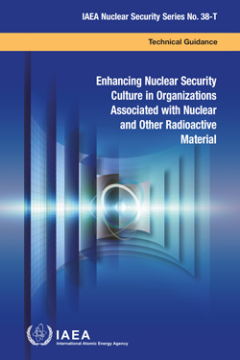
Enhancing Nuclear Security Culture in Organizations Associated with Nuclear a…
Nuclear security culture is an important component of an effective nuclear security regime, as it serves as a tool to improve the performance of the human component at nuclear facilities and organizations to counter both insider and outsider threats. Security culture connotes not only the technical proficiency of the people but also their awareness of security risks and motivation to follow est…
- Edisi
- -
- ISBN/ISSN
- 978-92-0-105319-0
- Deskripsi Fisik
- 206 hal
- Judul Seri
- -
- No. Panggil
- -
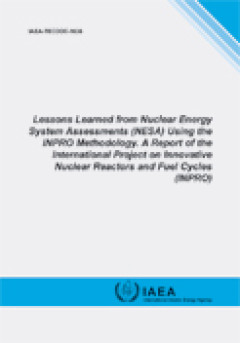
Lessons Learned from Nuclear Energy System Assessments (NESA) Using the INPRO…
INPRO is an international project to help ensure that nuclear energy is available to contribute in a sustainable manner to meeting the energy needs of the 21st century. This publication is part of Phase 2 of INPRO and provides a summary of seven nuclear energy assessment (NESA) studies that document the application of the INPRO methodology in national nuclear power programmes, in specific desig…
- Edisi
- -
- ISBN/ISSN
- 978-92-0-112509-5 / 1011-4289
- Deskripsi Fisik
- 165 p
- Judul Seri
- -
- No. Panggil
- -
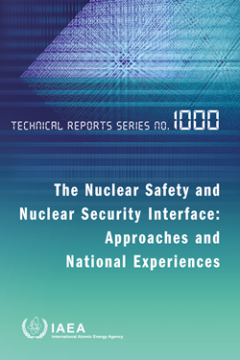
The Nuclear Safety and Nuclear Security Interface: Approaches and National Ex…
This publication was developed from the exchange of information, experiences and practices by participating Member States at the IAEA Technical Meeting on the Safety and Security Interface — Approaches and National Experiences, held in Vienna in 2018. It aims to provide a better understanding of the important elements of the interface between nuclear safety and nuclear security for facilities…
- Edisi
- -
- ISBN/ISSN
- 978-92-0-121920-6
- Deskripsi Fisik
- 59 Hal
- Judul Seri
- -
- No. Panggil
- -
 Karya Umum
Karya Umum  Filsafat
Filsafat  Agama
Agama  Ilmu-ilmu Sosial
Ilmu-ilmu Sosial  Bahasa
Bahasa  Ilmu-ilmu Murni
Ilmu-ilmu Murni  Ilmu-ilmu Terapan
Ilmu-ilmu Terapan  Kesenian, Hiburan, dan Olahraga
Kesenian, Hiburan, dan Olahraga  Kesusastraan
Kesusastraan  Geografi dan Sejarah
Geografi dan Sejarah